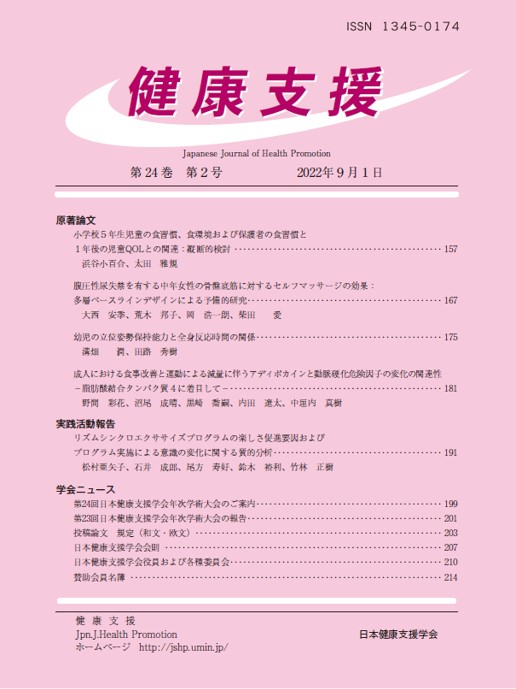Volume 24, Issue 2
Japanese Journal of Health Promotion
Displaying 1-5 of 5 articles from this issue
- |<
- <
- 1
- >
- >|
-
2022 Volume 24 Issue 2 Pages 157-165
Published: September 01, 2022
Released on J-STAGE: December 13, 2022
Download PDF (454K) -
2022 Volume 24 Issue 2 Pages 167-174
Published: September 01, 2022
Released on J-STAGE: December 13, 2022
Download PDF (537K) -
2022 Volume 24 Issue 2 Pages 175-179
Published: September 01, 2022
Released on J-STAGE: December 13, 2022
Download PDF (406K) -
2022 Volume 24 Issue 2 Pages 181-190
Published: September 01, 2022
Released on J-STAGE: December 13, 2022
Download PDF (638K) -
2022 Volume 24 Issue 2 Pages 191-198
Published: September 01, 2022
Released on J-STAGE: December 13, 2022
Download PDF (563K)
- |<
- <
- 1
- >
- >|
